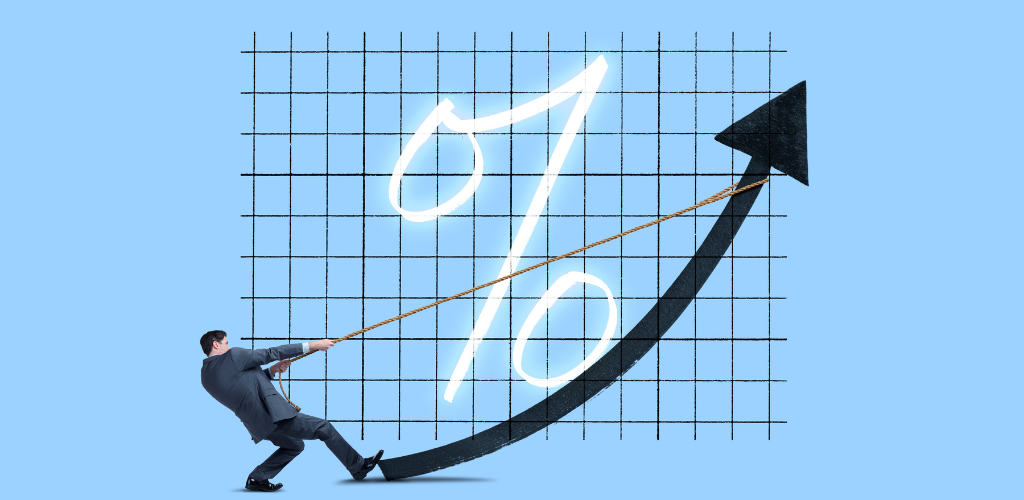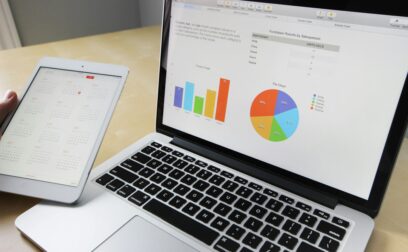Inflation is going up, but why? Swoop looks behind the headlines and explains why the economy behaves in the way it does.
AUTHOR: Owen Hawkins
This week, the Bank of England increased interest rates to five percent in response to the high level of inflation. Should this worry you as an SME?
Understanding topics such as inflation and interest rates can provide your business with key knowledge on what is happening in the current economic climate. In turn this can assist you in making decisions for the future of your company.
This article will help you understand how interest rates and inflation work, how they affect your business – and what you can do about it.
What inflation and interest rates are, and how they affect you
Inflation
This is an increase in the average price level of an economy. This means that goods and services become comparatively more expensive. Inflation is calculated by measuring the cost of a typical basket of goods. The faster the prices rise, the higher the level of inflation.
For example: a new computer that cost £950 last year might cost £1,200 today.
Although this means that the cost of equipment, raw materials and products your business buys is going up, there are some benefits: investors are incentivised to put more money into growing businesses as their investments would be worth more after the value has inflated.
Interest rate
Interest rates define the cost of borrowing. The higher the percentage, the more you have to pay back. Rates on business loans are typically well above the base rate, while personal mortgages are much closer to the base rate.
If you have a fixed rate loan, it will start feeling more like a good deal, particularly on special low-interest products such as start up loans and RLS (Recovery Loan Scheme) products. If you are currently looking to borrow, you’ll find the cost of doing so will be more expensive because the interest rates have gone up.
A lower interest rate would incentivise businesses to invest in themselves as borrowing money is comparatively less expensive, which helps small businesses expand as they can borrow more with a lower cost.
How does this occur in the real world?
As businesses grow, they increase the output of the economy. This economic growth causes the level of inflation to rise.
A higher level of inflation makes goods and services more expensive and reduces incentives for consumers to save, as money in the bank is losing value.
For example: If you’ve got £1,000 in the bank, that £950 computer you could’ve bought last year is now too expensive because the interest rate has not kept up with the increasing cost of goods.
As inflation makes goods and services more expensive, the Bank of England increases the rate of interest to encourage savers to put more money in the bank.
More money in the bank means that the level of growth and investment reduces because there is a lower supply of liquidity in the market: people are spending less. This has the effect of reducing the level of inflation.
As the level of growth decreases, so does the money supply, which can indicate an upcoming recession or depression.
To avoid recession, the Bank of England stimulates growth in the economy. How does the Bank achieve this?
First, the interest rate is reduced to encourage growth and investment.
This higher interest rate would make business purchases less expensive and would decrease consumer savings as they would have less return on the money they save.
Increased spending will lead to economic growth… which will likely increase the level of inflation.
These competing drives go back and forth on a general trend of growth.
What you can do to protect your business
As the level of inflation rises, many businesses increase investments into growth and assets such as plant machinery, computer equipment or vehicles that businesses use in their daily operations. They therefore have fewer liquid assets, as they would have a higher return on their investment and a more stable store of wealth in material assets (as their value increases with the level of inflation).
When the interest rate rises, many businesses may put their money in the bank to take advantage of higher rates and reduce their purchases of capital goods and business investment as they would have a lower return.
Whether you stash your money in the bank or invest in what your business needs to grow is up to you: you just need to be sure that you are aware of the downsides of your actions if trends continue. It’s always good to have some liquidity, but failure to invest in growth – at any time – means that your competitors could overtake you.
Inflation and interest rates are balanced by the Bank of England – but businesses should be aware of both, and how they are affected. Finding a balance between the two is key.
































 yet? Register here!
yet? Register here!